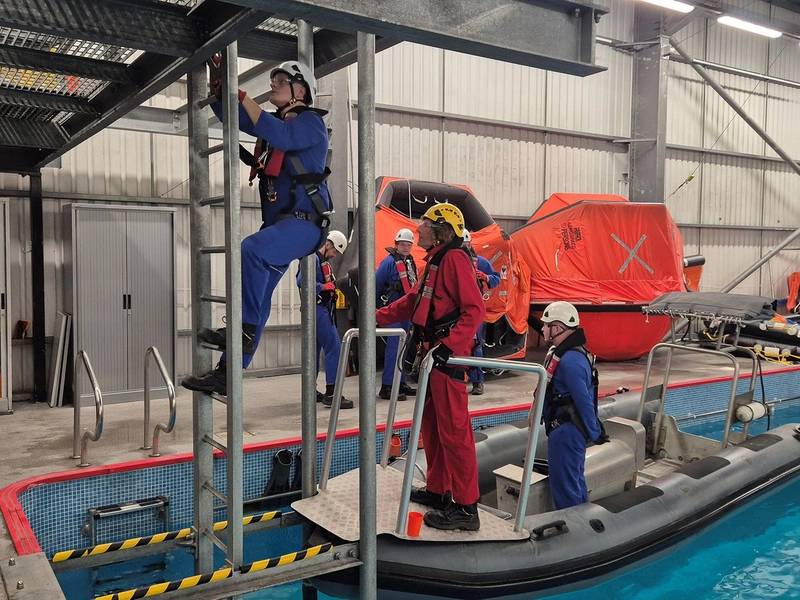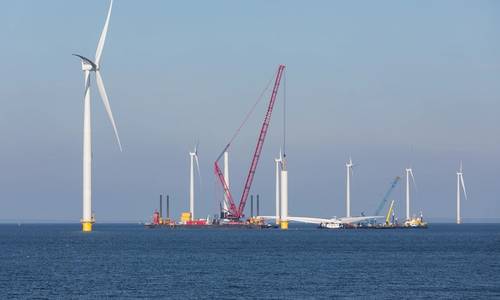Oil and Gas to Wind Cross-Skill Pilot Delivers First Batch of Qualified Technicians
June 24, 2025

Delivering an integrated technician workforce for a just energy transition between oil and gas to wind has moved a step closer as 15 technicians complete the pilot program developed by the Engineering Construction Industry Training Board (ECITB), in partnership with Global Wind Organisation (GWO) and the Offshore Renewable Energy (ORE) Catapult.
Eight learners completed the six-week program at Grangemouth earlier in June and a further seven will complete this in Aberdeen by the end of the month.
The 15 learners include employees from Wood, Petrofac, Semco Maritime and Ponticelli, as well as ECITB-supported individuals and five former mechanical technicians from Grangemouth Oil Refinery.
Many of the learners will move immediately to roles on wind assets. Interviews are taking place with the refinery workers and industry employers, with one already securing a role with Wood.
The pilot program developed by the Engineering Construction Industry Training Board (ECITB), in partnership with Global Wind Organisation (GWO) and the Offshore Renewable Energy (ORE) Catapult, supports two-way deployments across oil and gas, and wind infrastructure.
It recognized prior learning and ongoing competence of qualified oil and gas technicians and delivered a task-based program of technical activity across electrical, mechanical and instrument pathways as well as wind-specific GWO training and on-site turbine familiarisation.
“The chance for time-served technicians to draw on years of experience while building on their existing skillsets resonated strongly with my own ambition for personal and professional development.
“I viewed the program as a crucial pathway to transition from oil and gas into the renewable energy sector. With over a decade of offshore experience, I was eager to apply my skills in a growing and future-focused industry.
“The training and support provided were instrumental in helping me secure a role with GE Vernova after the programme, where I will be joining the team as a lead electrical commissioning technician at Dogger Bank – the world’s largest offshore wind farm,” said Niall Gibb was one of the learners at Grangemouth.
Current UK-installed wind capacity needs to double for both onshore and offshore wind if the U.K. Government targets are to be met by 2030. But the recent Skills Intelligence report released this week by RenewableUK and OWIC identifies wind turbine technicians as the most in-demand occupation with an average shortfall of over 11,000 technicians annually over the next five years. Regional analysis also shows the highest workforce concentrations will be in coastal and Scottish regions.
The Pilot Workforce Transition Program
The ECITB is currently reviewing feedback from the learners, training providers and employers and aims to have a final program widely available through its technical training providers in the autumn.
The ECITB funded the training for all workers and received additional support for the five workers from Grangemouth refinery, which were co-funded by the Scottish Government.
Training was delivered at Forth Valley and North East Scotland Colleges and GWO / ECITB-approved training provider, RelyOn. Learners also completed elements of the program inside the nacelle of a wind turbine at ORE Catapult’s Levenmouth demonstration turbine.
 (Credit: ECITB)
(Credit: ECITB)
Pre-requisites to the program included assurance of ongoing technical competence aligned to a workers’ primary technician trade through the Connected Competence scheme, a base standard which is recognized in the Energy Skills Passport and will help provide a clear pathway for re-skilling when the passport is further developed this year.
The six-week training included task-based cross-skilling activities across electrical, mechanical and instrumentation pathways as well as GWO’s wind-specific safety training. This includes slinger signaller, enhanced first aid, working at height, manual handling, fire awareness, sea survival and GWO’s Basic Technical Training (BTT) through its REcognition scheme.
“There is a clear case to support the industry’s supply chain to cross-skill existing workers to service both the operations and maintenance of late-life oil and gas assets whilst also being deployed to wind.
“It is vital we maintain the appropriate standards of technical skills and behavioural safety across the engineering construction sectors and the two-way transition of skilled workers between sectors will help improve safety, workforce mobility and the resilience of the industry,” said Andrew Hockey, CEO of the ECITB.





